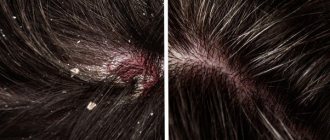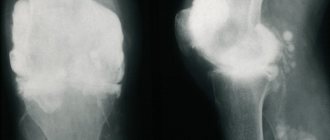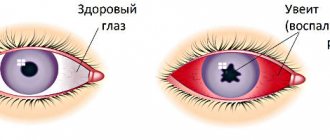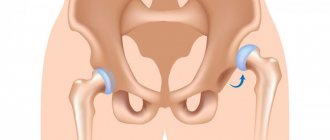What is dementia?
Dementia (acquired dementia) occurs as a result of gradual organic damage to brain cells due to various reasons, which we will discuss in more detail below. The irreversible process of death of brain cells causes a gradual deterioration of memory (primarily short-term) and a decrease in a person’s mental abilities. At first, the symptoms are almost invisible (it all starts with mild forgetfulness), they gradually increase until a complete and irreversible collapse of the personality occurs.
Dementia is:
- loss of the ability to reason sensibly, the ability to think;
- the complete lack of control of a patient with dementia over his emotions;
- inappropriate behavior, especially in the later stages of the disease.
Acquired dementia is always irreversible: dead brain cells are not restored. That is why the most important thing is timely (the earlier, the better) diagnosis and treatment. The sooner treatment is started, the earlier the pathological process will be stabilized and the longer the patient will be able to maintain a clear mind.
Currently, the causes of senile dementia are well studied. They are divided into two groups: hereditary and environmental (environmental causes).
Living with someone with dementia
People with dementia behave like little children. At the same time, they gradually lose skills without acquiring new ones. Relatives should take this fact for granted and not blame themselves for anything. If you detect the first signs of memory impairment, you should convince your loved one to contact a neurologist. Typically, at the onset of dementia, patients agree to this proposal. Neurologists at the Yusupov Hospital advise people who live next to a person with dementia to adhere to the following rules:
1. Don't be left alone with your problems. Caring for a loved one should not destroy connections with the outside world. You should ask relatives to call and come more often. You need to find people who were in a similar situation and communicate with them; 2. Do not refuse the help of your family and friends. You need to make others feel that their participation is extremely important to you; 3. Do not wait for negative emotions to spill out in the presence of the patient. Take your anger out somewhere else; 4. If you are tired or experiencing emotional exhaustion, contact a psychologist at the Yusupov Hospital. It will help prevent depression; 5. Pay proper attention to yourself, visit beauty salons, dress well.
If a loved one has memory impairment, you should not leave him alone with the problem. By contacting the specialists at the Yusupov Hospital, the patient’s relatives will receive recommendations that will allow them to live more comfortably. Our experts will tell you how to care for it, organize your life, and ensure safety.
Organization of patients' everyday life
If doctors have diagnosed a patient with dementia, his relatives should specially arrange rooms for the patient to live. You need to put locks in them, leave a minimum number of things and furniture, and remove sharp and cutting objects. Most people with dementia exhibit aggression and a tendency to vandalism. They can harm themselves and others. To prevent the patient from throwing away or destroying money and documents, they should be removed from the room and hidden.
A patient suffering from dementia will never be able to appreciate the actions of a caregiver or show gratitude. There is no need to be offended by him about this, just as we are not offended by small children. Dementia does not necessarily progress to the third stage of the disease. In many cases, severe memory impairment can be prevented with adequate therapy.
Some memory disorders are reversible. Sometimes, through the joint efforts of doctors and people caring for a patient, it is possible to partially restore impaired functions and improve the quality of life. Neurologists, psychotherapists and rehabilitation specialists at the Yusupov Hospital together create an individual treatment program for each patient. This guarantees the maximum effect of the therapy. Doctors at the neurology clinic constantly monitor patients and, if indicated, change medications, their doses, and the regimen of use.
To provide your loved one with adequate medical care and professional care if dementia develops, call the contact center at any time of the day, regardless of the day of the week. Our specialists will select a convenient time for consultation with a neurologist who specializes in the diagnosis and treatment of memory disorders.
Environmental
There are several reasons, we list them:
- Advanced age. After 60–65 years, the risk of the disease increases significantly, this is due to the fact that older people, due to their age, are more susceptible to external factors.
- Diabetes. This disease often affects blood vessels, including the brain, and in the absence of adequate treatment can lead to dementia.
- Stroke. When a stroke occurs, certain blood vessels are damaged and there is bleeding in the brain, which can contribute to the onset of dementia.
- High pressure. Hypertension also negatively affects the health of blood vessels and can lead to dementia.
- Any brain injuries, as well as tumors, hematomas, large abscesses.
- Smoking and alcohol have a huge negative impact on the brain. The result is senile dementia.
- Level of education and professional activity. Highly educated people who engage in mental work all their lives are less susceptible to senile dementia, and vice versa: people who do not have an education and do not train their brains get sick more often, and their disease progresses faster.\
- Violation of immunity and metabolism in the body.
Hereditary
If a blood relative of an older person has had Alzheimer's disease or other similar diseases, the likelihood of developing dementia increases.
Publications in the media
The second half of the 20th century was characterized by significant changes in the population structure. The rise in economic and social standards of living, advances in health care and changes in the lifestyle of people in economically developed countries have led to a significant increase in average life expectancy, and, consequently, to an increase in the number of elderly and senile people. According to statistics, in 2000 there were about 400 million people aged 65 years and older in the world. It is expected that the trend toward “aging populations” in economically developed countries will continue in the near future. For clinicians, these demographic trends increase the relevance of geriatric issues.
Already today, at least half of those seeking medical help are elderly. Today, doctors of various specialties need to know and take into account in their practice those physiological and psychological characteristics that characterize older people.
Almost three-quarters of them complain of increased forgetfulness and decreased mental performance. The causes of cognitive dysfunction at this age are varied. Changes in higher brain functions develop as a consequence of natural involutive changes in the brain, and as a result of various somatic, neurological and mental diseases characteristic of old age.
Cognitive disorders significantly reduce their quality of life. Meanwhile, modern methods of therapy in most cases make it possible to reduce the severity of existing disorders, increase the duration of active life and delay the onset of dependence on others.
All this dictates the need for clinicians to be attentive to the issues of diagnosis and differential diagnosis of cognitive disorders in old age, and to properly manage patients with this type of mental disorder.
Etiology of cognitive impairment in old age
There are several dozen diseases in which cognitive dysfunction naturally develops. The most common of these is Alzheimer's disease (AD), which develops in 5–15% of people in this population. This disease was named after the Austrian psychiatrist Alois Alzheimer, who first described the clinical and morphological features of dementia in a 54-year-old patient.
For a long time, AD was considered a relatively rare disease with onset in middle age, and most cases of senile dementia were regarded as the result of decreased cerebral blood flow (“atherosclerotic dementia”). However, in the 50s and 60s of the twentieth century it was shown that the decrease in cerebral blood flow is, in fact, secondary to the atrophic process.
The morphological unity of the so-called “presenile” and “senile” dementia was also shown. AD is a disease of multifactorial etiology. Undoubtedly, there is a genetic predisposition to the development of this disease, although in the general population familial forms are less common than sporadic ones. The pathogenesis of this disease is complex and not fully understood.
Today, most researchers assign a central role to the accumulation of a pathological protein (the so-called beta-amyloid) in the brain parenchyma, which has toxic properties for neurons. In this case, accumulation begins to be determined 10–15 years or more before the appearance of the first clinical signs of the disease.
The second most common cause of cognitive impairment in old age is cerebrovascular disorders, which are based on such widespread pathological conditions in old age as atherosclerosis of cerebral vessels, arterial hypertension, cardiac arrhythmias with a high risk of thromboembolism in the brain and other cardiovascular diseases.
These etiological factors can lead to both repeated acute cerebrovascular accidents and chronic cerebral ischemia. Often, clinical and morphological signs of asthma and cerebrovascular insufficiency coexist in the same patient. In such cases, they speak of a mixed, vascular-degenerative etiology of cognitive disorders.
Currently, the reasons for the frequent combination of two main etiological forms are being actively discussed. It is assumed that this combination is not random. Today it has been proven that cerebral vascular insufficiency is an independent risk factor for AD.
More rare causes of cognitive impairment in old age are other degenerative diseases of the central nervous system (Pick's disease, Parkinson's disease, Huntington's chorea and other diseases), traumatic brain injury, brain tumors, neuroinfections, normal pressure hydrocephalus...
Most diseases in the clinical picture of which cognitive impairment is noted begin in old age. However, it would be wrong to consider age as the cause of brain diseases. It is well known that many elderly people are not inferior to young and middle-aged people in terms of memory and intelligence capabilities. Age itself may be seen as a cause of relatively small and nonprogressive decline in some cognitive domains.
In this case, the most vulnerable are the so-called “dynamic” functions: speed of reaction to external stimuli, the ability to concentrate for a long time, the ability to quickly switch from one type of activity to another. These psychological facts should be taken into account when organizing the work activities of older people.
At the same time, memory for life events, general knowledge, vocabulary, analytical abilities, perception and speech change slightly with age. Therefore, the appearance in old age of clinically distinct disorders of these functions, progressive forgetfulness for current events and life events, loss of professional or social competence should always be considered as pathological signs.
Syndromes of cognitive impairment
The most severe form is dementia. Dementia (dementia) is a persistent impairment of memory and other higher mental functions acquired as a result of an organic disease of the brain. As can be seen from this definition, when making a clinical diagnosis of “dementia,” both the qualitative characteristics of the defect in higher brain functions and its severity are taken into account.
The prevalence of dementia in European countries and North America ranges from 5% of people aged 65–70 years to 25% of people over 80 years of age. In AD-associated dementia, the clinical picture is dominated by memory impairment. In the first stages of the disease, mnestic disturbances are characterized by slight forgetfulness of current events.
Subsequently, difficulties arise in reproducing more distant life events. The most stable memories are those of childhood and youth. As a rule, memory impairments in AD are accompanied somewhat later by impairments of other cognitive functions. The most typical are disturbances in spatial orientation and speech.
At advanced stages of the disease, patients naturally lose independence and independence, cannot use household appliances, and begin to need outside help when dressing, eating, and performing hygiene procedures. Mental disorders often occur in the form of increased suspicion, hallucinations, aimless motor activity, and disturbances in the sleep-wake cycle.
In typical cases, 7–10 years pass from the first manifestations of forgetfulness to the stage of severe dementia in AD. However, if the disease begins before the age of 60, personality disintegration can occur much faster. The clinical picture of the second most common form of dementia, vascular dementia, differs significantly from AD.
Memory impairment can sometimes be expressed to a relatively small extent. Slowness of intellectual processes, rapid fatigue, decreased criticism, and emotional lability are more typical. An important distinguishing feature is focal neurological symptoms in the form of reflexoral automatism, walking impairment, increased tendon reflexes, and urinary incontinence.
If the patient has a history of strokes, the location and extent of brain tissue damage has a direct impact on the nature of cognitive focal neurological symptoms.
Dementia is the result of long-term progression of degenerative or vascular diseases of the brain. Clinically defined symptoms are formed even before the patient’s maladjustment in everyday life occurs, that is, before the onset of dementia in the strict sense of the term. Obviously, it is advisable to diagnose at the pre-dementia stages of brain diseases, when therapeutic measures can delay, and, ideally, prevent the development of dementia.
In 1997, the term “mild cognitive impairment” was proposed to refer to the predementia stages of Alzheimer's disease. Then this formulation began to be used more widely, namely for cognitive impairment of various etiologies that do not reach the stage of dementia. The current definition of mild cognitive impairment (MCI) places this syndrome between natural age-related changes in cognitive function, on the one hand, and dementia, on the other.
The diagnosis of MCI was included in the latest revision of the International Classification of Diseases (ICD10). The term “Moderate cognitive impairment” can be used as an independent diagnostic position in cases where cognitive impairments that exceed the age norm, which, however, do not lead to a loss of autonomy and independence, come to the forefront of the clinical picture.
Like dementia, MCI is a polyetiological syndrome that can be caused by various brain diseases. Most brain diseases are accompanied by both cognitive and motor or sensory impairments. The latter confirm the presence of an organic brain disease, and, consequently, the pathological nature of cognitive impairment.
An exception is Alzheimer's disease (AD). As noted above, focal neurological symptoms are absent in the early stages of AD. Therefore, the differential diagnosis between age-related disorders and the initial signs of AD is based mainly on an analysis of the characteristics of cognitive disorders. The rapidly progressing nature of cognitive disorders, a family history of dementia, and hippocampal atrophy during RT examination also testify in favor of incipient AD.
As with dementia, the clinical picture of MCI is determined by the nosological form underlying cognitive disorders. It is customary to distinguish three main clinical variants of MCI syndrome:
- • amnestic variant of MCI. At the same time, the clinical picture is dominated by memory impairments, which are gradually progressive. It is the most common clinical variant of the syndrome under discussion. Dynamic observation of patients with this variant of MCI shows that in the future they, as a rule, develop a detailed clinical picture of Alzheimer's disease.
- • MCI with multiple cognitive impairment. It is characterized by the presence of combined damage to several cognitive functions: memory, spatial orientation, intellectual operations, etc. This type of MCI can be observed in the initial stages of various brain diseases, for example, with cerebrovascular insufficiency and diseases with predominant damage to the subcortical basal ganglia (for example, Parkinson's disease ).
- • MCI with impairment of one cognitive function with intact memory. Variants of this syndrome with a predominance of speech or praxis impairments have been described. As a rule, these disorders are observed in the early stages of quite rare neurological diseases, such as primary progressive aphasia and corticobasal degeneration. At this stage, cognitive impairment does not cause maladaptation in everyday life, but, nevertheless, is a clinically delineated syndrome, which is identified both with the help of special (neuropsychological) research methods and in a regular conversation with the patient and his relatives.
A number of studies, including those in our clinic, have shown that before the formation of MCI syndrome, it is possible to identify individual clinically significant cognitive symptoms.
Therefore, we believe that, along with moderate ones, it is also advisable to distinguish mild cognitive impairment. In the pathogenesis of mild cognitive impairment, age-related changes in cognitive abilities, which were already mentioned above, and other reasons are important. It should be noted that the severity of age-related changes in cognitive functions varies from person to person. Mild cognitive impairment often occurs at a younger age with various brain diseases, being a clinical sign of focal or widespread brain damage. Their identification and correction, along with other neurological disorders, improves the patient’s quality of life and makes it possible to prevent or slow down the development of more severe cognitive impairment. Objectification of cognitive impairment
The diagnosis of cognitive impairment is based on an analysis of the patient’s complaints, a conversation with him and his relatives to identify characteristic clinical symptoms, and the use of neuropsychological tests. Complaints about decreased memory and mental performance are what bring the patient to the doctor.
However, patient complaints are the most unreliable diagnostic sign of cognitive impairment. It is well known that self-esteem of cognitive abilities is closely related to the emotional state of the patient. Persons with anxiety-depressive disorders often tend to exaggerate the severity of disorders.
Situations regularly occur in clinical practice when a patient’s complaints about poor memory are not confirmed by objective research methods. Clinical and neuropsychological research methods are used to confirm cognitive impairment. The latter represent various kinds of tests and tests for orientation in place and time, memorization and reproduction of words and pictures, retelling of text, generalization, interpretation of proverbs...
To assess spatial orientation, a clock drawing test is widely used: the patient is asked to draw a round clock with hands on a sheet of unlined paper that shows the time specified by the doctor. Some instruments, such as the Mini-Mental State Examination, have been specifically developed for geriatric patients and have worked well in clinical practice.
Often the patient's complaints about increased forgetfulness are not confirmed by the results of an objective study. In these cases, the patient's emotional state should be carefully assessed, since the subjective feeling of memory loss is a very characteristic symptom of depression.
In other cases, a negative result on neuropsychological tests is associated with mild cognitive impairment. Therefore, patients with complaints of memory loss need observation and repeated studies, even in the absence of objective confirmation of cognitive impairment.
Examination of patients with cognitive impairment
As mentioned above, the diagnosis of cognitive impairment is syndromic and requires a comprehensive clinical and instrumental examination to establish the cause of the impairment. First of all, so-called reversible forms of cognitive impairment should be excluded. The latter develop, in particular, with systemic dysmetabolic disorders.
Therefore, the presence of cognitive impairment in a patient requires a full examination of the somatic status, as well as a study of biochemical blood parameters, the level of thyroid hormones, and, if possible, the concentration of vitamin B12 and folic acid.
Disorders associated with depression are also reversible. Emotional disturbances can cause both subjective and objective cognitive impairment. Therefore, you should carefully assess your emotional state. Cognitive and emotional disorders may represent parallel conditions or be different manifestations of a common pathological process (for example, pathology of the frontal lobes of the brain).
One way or another, the presence of depression requires the prescription of antidepressants. Drugs with strong anticholinergic effects, such as amitriptyline, should be avoided, as such drugs may have a negative effect on cognitive abilities in older adults. On the contrary, modern antidepressants from the group of selective serotonin reuptake inhibitors help reduce the severity of cognitive impairment.
The progressive nature of cognitive disorders is an indication for neuroimaging: computed x-ray or, preferably, magnetic resonance imaging of the brain. This ensures, firstly, that other causes of dementia are excluded, such as a brain tumor or normal pressure hydrocephalus. Obviously, these conditions require a special approach to treatment.
Secondly, with the help of neuroimaging it is possible to obtain information that has diagnostic value for determining the nosological form of cognitive impairment. Thus, a symptom characteristic of AD is hippocampal atrophy, and with vascular cognitive impairment, ischemic changes in the gray and white matter of the brain naturally occur.
Principles of management of cognitive disorders
Therapy for cognitive disorders has two main goals: preventing the increase in the severity of cognitive impairment and reducing the severity of existing impairments. The main measures necessary for treatment are as follows:
- diagnosis and correction of dysmetabolic disorders, which themselves can cause cognitive disorders or aggravate disorders associated with structural brain damage;
- assessment of emotional status and, if indicated, treatment of depression;
- treatment of existing cardiovascular diseases, which has pathogenetic significance both in vascular cognitive impairment and in asthma, as well as treatment of other somatic disorders;
- use of neuroprotective drugs. “Neuroprotective” drugs are understood as drugs that help increase the survival of neurons under various pathological influences, for example, under conditions of hypoxia. Theoretically, the use of neuroprotective drugs helps prevent the increase in the severity of cognitive impairment. However, in practice, this preventive effect is very difficult to prove. However, such an effect is expected in the preparations of ginkgo biloba (tanakan, etc.), Cerebrolysin, Actovegin, drugs from the statin group...
- neurotransmitter replacement therapy. As numerous neurochemical studies have shown, the severity of cognitive impairment of various etiologies most reliably correlates with a decrease in the activity of CNS mediators. This served as the basis for the use of drugs that act on the main neurotransmitter systems of the brain for symptomatic purposes. Acetylcholinesterase inhibitors (Reminyl, Exelon, Aricept, Neuromidin) have been successfully used over the past 10–15 years to treat, mainly, Alzheimer's disease.
The effectiveness of these drugs for this disease at the stage of mild and moderate dementia today does not raise serious doubts.
Restrictions on the use of acetylcholinesterase inhibitors are sick sinus syndrome and other heart diseases with a tendency to bradycardia, severe bronchial asthma, gastric and duodenal ulcers in the acute stage, severe depression, uncontrolled epilepsy. Frequent side effects when using drugs of this class are nausea and vomiting. The NMDA receptor antagonist (akatinol Memantine) began to be used for the treatment of dementia somewhat later, but has already proven itself well in clinical practice. A clear positive effect of the drug has been proven in asthma, vascular and mixed dementia of varying severity. As with acetylcholinesterase inhibitors, the feasibility of using this drug at the stage of MCI is being discussed.
The advantageous aspect of akatinlamemantine is its greater safety and tolerability compared to acetylcholinesterase inhibitors. Taking into account its mechanism of action, a certain neuroprotective effect of the drug cannot be excluded. The combined use of anticholinesterase drugs and memantine is possible, which often results in an enhanced effect.
Dopamine receptor agonists (pronoran) are used for mild and moderate cognitive impairment, mainly of an age-related nature. The use of this drug is based on recent studies that have shown a correlation between the severity of age-related impairments in attention and memory with changes in the dopaminergic neurotransmitter system. During dementia, dopamine receptor agonists appear to have little effect.
Cognitive disorders are widespread in the population. Their timely detection and proper treatment undoubtedly improves the quality of life of patients and is important for preventing the most severe manifestations of cognitive disorders in the form of dementia. But even today, a syndromic diagnosis of dementia does not sound like a death sentence, and in the near future we will definitely have more effective means of treating this serious neuropsychiatric disorder.
N.N. YAKHNO, Corresponding Member of the Russian Academy of Medical Sciences, Professor V.V. ZAKHAROV, Doctor of Medical Sciences, Department of Nervous Diseases of the MMA named after. THEM. Sechenov
Risk factors for developing the disease
One of the most important risk factors for developing a disease such as dementia is advanced age, which is why the adjective to the word dementia is almost always the term “senile.” On the other hand, the statement “old age equals dementia” is fundamentally incorrect; this disease is not an inevitable consequence of aging.
As a result of numerous studies, it was found that:
- regular exercise;
- to give up smoking;
- body weight control;
- proper balanced nutrition;
- control blood pressure, cholesterol and blood sugar levels
reduce the risk of developing dementia. Conversely, if an older person does not control the factors listed above, the risk of developing dementia increases.
Other risk factors are low level of education, persistent depression, and social isolation. In the same series we can name such cognitive functions as thinking, imagination, attention, perception, that is, the constant mental activity of an elderly person.
Older women are more prone to such a serious age-related disease as Alzheimer's disease, while men, on the contrary, are more likely to develop dementia.
Genetic predisposition plays a significant role in the development of this disease. If someone from the family, especially in the so-called first generation (parents-children), suffered from Alzheimer's disease or dementia, then the likelihood of developing the same disease in the heirs almost doubles.
Diagnostics
Dementia of the vascular type is diagnosed in the presence of clinical data, characteristic anamnestic or neuroimaging signs of cerebrovascular disease: previous stroke or cases of subclinical local cerebral ischemia.
It is also important to have a cause-and-effect relationship and a relationship in time between brain damage of vascular etiology and the development of cognitive impairment. The very presence of dyscirculatory disorders according to neuroimaging, as well as the presence of neurological disorders - hemiparesis, speech and swallowing disorders, walking and urination disorders, are mandatory.
It is necessary to differentiate between Alzheimer's disease and vascular dementia.
Once the syndrome of dementia is identified, it should be syndromicly distinguished from depression, moderate or even mild cognitive impairment and delirium. To diagnose depression, various questionnaires and tests should be used (clock drawing test, HADS anxiety and depression scale, Montreal Mental Status Scale, MMSE test, etc.).
The distinction between vascular dementia and dementia due to Alzheimer's disease is often difficult. If in Alzheimer's disease the deterioration can occur slowly and constantly, then in the case of vascular dementia the deterioration occurs suddenly (for example, after stroke) and proceeds in stages.
When the vascular component predominates, the following signs are common: focal neurological symptoms (rigidity, hemiparesis, bradykinesia, bulbar disorders), neuropsychological disorders depending on the location of the cerebral infarction (aphasia, lack of sensory sensitivity, apraxia), gait disturbances (with Parkinson-like or ataxic movements), urinary disorders with urinary incontinence and urgency.
In addition to a thorough neurological examination and targeted laboratory tests, MRI or MSCT is necessary to identify infarcts and white matter lesions.
It must be remembered that quite often the same patient exhibits both signs of vascular dyscirculation and symptoms of Alzheimer's disease. Modern research indicates that the chronic dyscirculatory process is a risk factor for the development of Alzheimer's disease and plays a pathogenetic role in the neurodegenerative process, based on this, the vast majority of cases of dementia are mixed in their pathogenesis - vascular-degenerative.
Classification of dementia
When classifying dementia, there are four main types of disease:
- Cortical. The large hemispheres of the cerebral cortex (hence the cortical) are affected. Causes: alcoholism, Alzheimer's disease.
- Subcortical. Negative changes occur under the cerebral cortex. Most often, difficulties arise when walking, problems with the upper and lower extremities. The most common cause of the disease is Parkinson's disease.
- Cortical-subcortical. Both the cerebral cortex and its subcortical layer are affected. The cause is most often a total cerebrovascular disease.
- Multifocal. Multiple lesions occur throughout the human nervous system, and the disease develops at several points at once. Symptoms and consequences depend on the location of the affected areas; they are usually extremely varied.
How to communicate with a patient
Regardless of the cause of dementia, irreversible changes occur in the cerebral cortex that radically change a person’s life. He loses the ability to remember and understand new information, recognize his children and other loved ones, and think logically. Over time, life skills are impaired, and the sick person cannot be left alone. He loses his personality traits.
Psychologists at the Yusupov Hospital advise people caring for people with dementia to acquire new communication skills:
- Avoid raising your voice;
- Speak slowly, smoothly;
- To make sure that you managed to attract attention to the information, you should look into the patient’s eyes during a conversation and touch him carefully;
- Be the first to take the initiative to talk, since as dementia progresses, it is more difficult for the patient to start a conversation;
- Formulate questions so that the respondent can give an unambiguous answer: I don’t know, no, yes;
- If the patient does not understand what he is being asked about, the thought needs to be formulated differently;
- It should be noted that patients with dementia remember the past better than the future;
- Try to talk more often with the patient about the past, as this calms him down;
- If the patient stops responding to the phrases you say, you do not need to talk about him in his presence in the third person, as this may be perceived as humiliation.
Three stages of the disease
Dementia never occurs overnight or over a short period of time: it develops gradually, worsening in stages over several years. Three stages of development of the disease are known:
- light;
- moderate;
- heavy.
Let's talk about each of them in more detail.
Light (early)
The disease is practically invisible, the patient is no different from the healthy one. Some absurdities in the behavior of an elderly person are often associated with age-related changes and are called senile eccentricities, without particularly focusing on them. But it would be necessary.
Early stage symptoms:
- decreased performance;
- loss of interest in past interests and hobbies;
- development of excessive traditionalism;
- denial of everything new, nostalgia for the past;
- memory impairment (especially short-term);
- problems with attention: either excessive concentration, or vice versa, a serious decrease in attentiveness;
- touchiness, isolation, against this background - irritability, often turning into aggressiveness;
- restriction of physical activity.
Often, along with the listed symptoms, old people begin to confuse objects and things, lose them, forget them, put them in the most unexpected places, and then search for them for a long time and unsuccessfully. For example, after the potatoes are peeled, the knife will be put in the refrigerator, and the peeled tubers will be thrown into the trash.
At the same time, an elderly person is still adequate, can take care of himself, and is oriented in both time and space.
Moderate
The disease is gradually gaining momentum:
- Memory lapses are more frequent and more severe. But, as before, events that happened recently are forgotten, but he remembers what happened to the patient in childhood and youth in the smallest detail.
- The forgotten is replaced by something invented, imagined or imagined. Often, a pensioner’s fantasies look so believable that many believe his stories, especially since fictional events, most often, are closely intertwined with real ones that actually happened.
- Walking alone becomes dangerous for the patient: he may forget not only his address, but also the way home. There are often cases when older people manage to get lost just by turning the corner of their house.
- Patients lose control over the simplest everyday situations: they forget to turn off the kettle or, even worse, they open the gas burner, forgetting to light the gas, or they may not close the door in the apartment.
- Speech is simplified, a person conducts a dialogue with short, simple phrases such as “give me a drink”, “I won’t”, “I want to go for a walk”, etc.
- The ability to dress and put on shoes independently is gradually lost, the patient forgets how to use a knife and fork, and problems with hygiene begin.
- The character deteriorates completely, mental degradation sets in.
The physical condition of an elderly person also leaves much to be desired: the gait changes seriously, muscles weaken, hands tremble, and sometimes it is difficult for the patient to even bring a spoon or mug to his mouth.
Severe (late)
There comes complete degradation of personality and loss of all acquired skills. He cannot eat or drink on his own, any hygiene procedures are also inaccessible to him, and he does not even remember them.
An elderly person loses activity, but sometimes sharp emotional outbursts occur, dangerous both for those around him and for the patient himself. Complete social disadaptation sets in, and the person gradually fades away.
Clinical course of the disease
Dementia is a disease that manifests itself as impairment of cognitive functions (attention, memory, thinking) and personality disorder. Psychiatrists distinguish three stages of the disease:
- The first stage is called early or mild dementia. At this stage of the disease, symptoms are not expressed. Patients may experience decreased concentration, they quickly get tired, and become lethargic. Their memory suffers, their interest in their surroundings decreases. People become emotionally unstable;
- The second stage of the disease is manifested by moderate dementia. Clinical signs of the disease are more pronounced. Patients' memory is severely impaired and their character deteriorates. They lose the ability to navigate in space, become apathetic or aggressive, irritable. Patients cannot perform simple tasks: take care of the house, eat, take care of themselves. At this time, they need the attention and care of loved ones;
- The third stage of the disease is manifested by severe dementia. Patients at this stage are completely dependent on the people around them. They are unable to perform even simple actions without outside help and lose control of urination and bowel movements. Patients often lie in bed and find it difficult to swallow food.
Vascular dementia
The vascular type of disease arises and develops as a result of damage to the blood vessels that supply the brain with oxygen (heart attack, atherosclerosis, hypertension, coronary heart disease) with subsequent damage to brain tissue. More often than others, smoking men over the age of sixty who do not have any serious physical activity suffer from vascular dementia.
Signs of vascular dementia:
- sleep problems;
- constant depression;
- persistent memory impairment;
- Bad mood;
- serious problems with the upper and lower extremities.
Symptoms
As a rule, “vascular dementia” is diagnosed if cognitive impairment was preceded by a stroke. Quite often, accompanying signs are symptoms of focal brain damage, for example, manifestations of hemiparesis (weakness of the muscles of one side, anisoreflexia, pathological foot signs, etc.). A characteristic symptom is a walking disorder - a slow, shuffling gait and instability (which patients themselves often call dizziness).
As mentioned above, the cause of vascular dementia lies in circulatory disorders in the brain. The potential for disturbances to occur exists in different areas of the brain. Therefore, the external manifestations of vascular type dementia differ significantly in each case. Let's list the most typical ones.
Dementia caused by damage to the midbrain is manifested by mesencephalothalamic syndrome. The first manifestations are confusion and hallucinations. A person becomes apathetic, withdraws into himself, does not care about his appearance, and neglects personal hygiene. His psychophysiological state is usually characterized by increased drowsiness. In some cases there are speech disorders.
In dementia caused by damage to the hippocampus, first of all, there is an impairment in the ability of memory to retain information about current events (long-term memory can be retained).
As a result of a stroke, apathetic-abulsic syndrome is observed in the prefrontal regions of the frontal lobes. The patient behaves inappropriately, there is no criticism of the condition. Inadequacy consists in repeated repetition of one’s own words and actions, or the words and actions of others.
Subcortical lesions lead to disruption, first of all, of daily activities: it is difficult for the patient to concentrate on one subject and maintain one type of activity; problems arise with making plans. There is also a violation of the skills of information analysis (separation of the main from the secondary).
A stable sign of vascular dementia is impaired urination; it is observed in almost all persons suffering from dementia.
Symptoms of vascular dementia are also noticeable in the psycho-emotional sphere. There is a general decrease in mood and self-esteem, emotional instability, depression appear, and self-confidence is lost.
Main symptoms of the disease
We have already said that the first symptoms of the disease do not cause concern: it all starts with mild forgetfulness, which is attributed to old age. But then the disease progresses and other symptoms of dementia appear:
- Fine motor skills of the hands deteriorate, a slight tremor begins, which gradually increases, capturing more and more new parts of the body.
- Hygiene problems. The patient may forget to brush his teeth, then skips water procedures, forgets to put on mandatory clothing (for example, a man can go outside without trousers, and a woman without a skirt).
- The train of thought is disrupted, the person loses the thread of the conversation, subsequently forgets even the names of the most common objects, for example, he will look at a fork and painfully remember the name of this object.
- Psychomotor skills deteriorate.
If the relatives of an elderly person closely monitor his condition, they will not miss the onset of dementia. It is important to remember that once symptoms appear, they will not disappear; they will only worsen and multiply like a snowball. That is why it is important not to miss the very beginning of the disease and have time to take measures in order to achieve, even if not a complete cure (this is impossible), then at least delay the onset of serious consequences.
Life expectancy with dementia
It is impossible to give an accurate forecast of how long a person with dementia will live. Dementia comes in different types and can be slow and gradual, or it can progress and be fatal very quickly. Much depends on age, health status, care and adequate therapy.
Life expectancy with vascular dementia
Vascular dementia is a severe form of the disease. Dementia is caused by vascular disease, often develops after an ischemic cerebral infarction or hemorrhagic stroke, with atherosclerosis or hypertension; factors in the development of this form of the disease can be heart defects, high lipid levels and other disorders. Vascular dementia affects men more often.
In dementia accompanied by Parkinson's or Huntington's disease, the prognosis depends on adequate treatment of these diseases. Most often, dementia with such concomitant diseases is not characterized by rapid progression; the life expectancy prognosis is several years, with Huntington's disease - up to 10-15 years. Dementia with Lewy bodies is a rapidly progressive disease with a life expectancy of about 7 years.
Life expectancy for other types of dementia
Dementia can be caused by various diseases. Very often, senile dementia is associated with Alzheimer's disease. In this case, the patient’s age plays an important role: the older the patient, the slower the disease progresses; The younger the patient, the more the disease progresses. The average life expectancy of a patient with Alzheimer's disease is about 6-10 years from the time of diagnosis. Much depends on the age and stage of the disease, the individual characteristics of the body.
Adequate treatment prescribed at an early stage of the disease can significantly prolong life and alleviate the condition. Specialists from the neurology department of the Yusupov Hospital have extensive experience in treating dementia and many other related diseases. Modern diagnostic equipment makes it possible to determine the areas of brain damage and the degree of development of dementia. The use of innovative world-class techniques at the Yusupov Hospital can improve the quality of life for patients with dementia.
Life expectancy in early dementia
Life expectancy at an early stage of the disease largely depends on the age of the patient. The younger the patient, the more complex and faster the disease progresses. In older people, the disease does not develop as quickly. Detected dementia at an early stage allows you to remain in adequate condition for a long time and take care of yourself. Manifestations of dementia at an early stage are:
- forgetfulness,
- slight mood swings,
- slight decrease in intelligence.
Life expectancy of bedridden patients with dementia
Bedridden patients with dementia are most often people who are at an advanced stage of the disease. Bedridden patients with dementia often die from pneumonia and sepsis, concomitant diseases already at a severe stage of dementia. The prognosis for dementia in bedridden patients is unfavorable, the condition is complicated by physical inactivity, impaired mental activity, and circulatory disorders.
Patients in serious condition are completely dependent on outside care; dementia is complicated by other diseases due to the patient’s immobility. At the Yusupov Hospital, relatives of the patient are trained. Caring for bedridden patients is complex and requires patience and knowledge about the characteristics of the disease.
Life expectancy of patients with dementia with optimal treatment
Life expectancy with dementia depends on the adequacy of treatment and care. At the first stage, the doctor prescribes diagnostic tests to differentiate dementia from other diseases. Treatment of senile dementia is based on eliminating the symptoms of the disease and reducing the risk of dementia progression.
Dementia is an incurable disease, the course of which depends on many factors - age, gender, type of dementia, concomitant diseases, adequate treatment and care. A calm environment and lack of stress help reduce the risk of progression of senile dementia.
Doctors recommend a special diet, vitamin therapy, music therapy, aromatherapy, acupuncture and other methods that improve brain activity. The average life expectancy of a young patient with dementia can be about 7 years; older people with dementia live on average from 7 to 15 years.
Treatments for dementia
So, the doctor made a diagnosis and determined the stage of dementia. The next stage is treatment. First of all, treatment will consist of taking medications aimed at preventing further destruction of brain cells and stimulating brain activity.
In the future, regular blood pressure checks of older people will be mandatory. This is necessary, because any increase in pressure will be one of the reasons for further progression of the disease.
From now on and forever - constant supervision of the patient, it is necessary to unobtrusively but constantly monitor his actions, and, of course, create all the necessary conditions for his comfortable living.
Such patients require constant care and monitoring:
- Communication with a patient with dementia does not require any special effort. You need to speak in short phrases, not loudly, but clearly and clearly, so that the patient understands what they want from him. No “hurry up”, do not get irritated under any circumstances, it is important to remember that your relative is not capricious, it is the illness that made him like this. Be prepared to repeat the same thing over and over again and be constantly reminded.
- The climate in a family with dementia should be calm and friendly. Absence of sudden noises and loud music is a must. The patient needs high-quality, but not bright light and comfortable furniture.
- Constant monitoring of compliance with the regime. It is necessary to monitor whether the patient has taken the medicine, and if not, remind him. But in no case should you allow them to be taken uncontrolled, because such patients have a memory like a “leaky sieve”; they can forget that they just drank the medicine and take it several more times.
- The occurrence of any side effect from taking the medicine, any new symptom, is a reason to urgently contact your doctor. It is also important to remember that any drug stops working effectively over time, as addiction gradually develops. Therefore, regular adjustments to drug treatment will be required.
Treatment
Treatment of vascular dementia should be aimed at correcting the pathological factors leading to this condition, as well as directly correcting cognitive functions. It makes no sense to describe all kinds of treatment regimens and give the names of specific drugs with their course and single doses in this article, because each specific case requires an individual approach.
The general principles of therapy for vascular dementia should be the correction of hypertension and cholesterol levels (however, you should not reduce cholesterol levels below 3.5-4 mmol/l due to the risk of a combination of Alzheimer's disease and vascular dementia, and Alzheimer's disease reacts negatively to low cholesterol levels , although, unfortunately, it is not entirely clear why), as well as the use of antiplatelet or anticoagulant therapy.
It is important to carry out a course of treatment with antioxidant (Mexidol, Cytoflavin, etc.), neuroprotective (Actovegin, Ceraxon, Cortexin, etc.), vasoactive (Sermion, Cavinton, etc.) drugs, with individual selection based on availability contraindications in the patient and the clinical picture as a whole, as well as (the author’s opinion), anti-dementia drugs should be used, and the drug of choice should be memantines (Akatinol, Marux, etc.).
An equally important point is non-drug therapy, namely proper patient care and psychological comfort. After all, if you are surrounded by close people, and they treat you with a positive attitude, life becomes a little better.
Disease prevention
Of course, it is easier to prevent any disease than to treat it later, dementia is no exception. Measures to prevent dementia are:
- Controlling blood sugar and cholesterol levels, monitoring blood pressure and preventing its serious increase. Any serious interruptions in the functioning of the body can become a trigger for this serious disease.
- Complete cessation of bad habits. Smoking and alcohol addiction can cause a stroke or heart attack, which, in turn, can trigger dementia.
- Regular feasible physical exercise and walks in the fresh air. They stimulate blood flow to all organs, which not only improves overall well-being, but also improves mood.
- Balanced healthy diet. It is advisable to give preference to foods such as vegetables, fruits, fish, cereals, nuts, while simultaneously eliminating (or seriously reducing) the consumption of smoked meats, marinades, and other not very healthy foods.
- Communication. It is important to maintain the same social circle and not withdraw into yourself. Self-sufficiency is good if it is in moderation.
Questions and answers
What are the ways to prevent vascular dementia?
To prevent the formation of vascular dementia, it is useful to take vitamins and substances with antioxidant properties. These include vitamin E, C, and all types of polyunsaturated fatty acids. It is necessary to monitor sufficient levels of B12 and folic acid, and exclude foods high in cholesterol from the menu.
Can dementia be cured?
Vascular dementia cannot be completely cured. But with the right approach to therapy, it is possible to increase the patient’s life and activity.
What are the complications of dementia?
Complications are observed in severe stages of this disease and in the absence of complex therapy. A person completely loses social adaptation and ability to work, and injuries may occur due to ataxia. The main diseases that lead to brain pathology are getting worse - diabetes, hypertension, atherosclerosis.
Disease statistics
World statistics provide disappointing information: the number of people suffering from dementia is steadily growing. In 2009, the number of people with dementia was estimated to be about 35 million, and the number was projected to be 115 million by 2050. But the forecast has now been increased by 15 million. That is, the rate of increase in the incidence of dementia is steadily increasing, this is an alarming sign.
Currently, the morbidity statistics in Russia are not encouraging either. We are in seventh place in the world in terms of incidence of this serious disease. According to the most optimistic estimates, about two million elderly people in Russia are currently diagnosed with dementia, and this figure is growing.
Nutrition for dementia
Dementia is a pathology that develops against the background of organic brain damage and is manifested by impaired intellectual activity and personality disorder. According to statistics, older people are more susceptible to the disease, although the onset of dementia at an early age cannot be ruled out. The pathology is characterized by progression and a gradual increase in severity; the patient does not immediately lose acquired skills, knowledge and abilities. At the Yusupov Hospital, a personal nutritionist will develop an individual menu according to the recommendations of the attending physician.
Proper and healthy nutrition for dementia
A balanced and nutritious diet plays an important role in the treatment of dementia, since brain cells have an increased metabolism, so even a slight deficiency of any elements can lead to serious consequences. For this reason, it is worth taking foods seriously, as they can not only help improve the condition of patients with dementia, but also help prevent the onset of pathology.
According to statistics, residents of eastern countries, in particular India, rarely suffer from diseases that cause mental impairment, as they attach great importance to the quality of food and its composition. For example, daily use of seasonings contained in oriental dishes (curry, turmeric, cinnamon and others), according to research, can prevent the formation and accumulation of amyloid plaques in the brain, which cause damage to neurons and lead to the formation of Alzheimer's disease, accompanied by dementia. Based on these observations, it is worth concluding that for therapeutic and preventive purposes it is necessary to formulate a diet in such a way as to reduce the degree of manifestations and the likelihood of the formation of diseases leading to dementia.
Vascular dementia often develops against the background of atherosclerosis, which is formed due to elevated cholesterol levels, which leads to the appearance of plaques and blockage of blood vessels. As a result, the brain experiences oxygen starvation, which ends in the destruction of neurons. For this reason, it is worth monitoring your cholesterol levels, in particular, avoiding foods with high cholesterol content and eating those that lead to a decrease in its levels.
Foods that lower cholesterol:
- dry red wine;
- almond;
- beans;
- blueberry;
- avocado;
- vegetable oils;
- barley, etc.
Also, if you have dementia, you need to drink enough water, and your diet should include dishes that improve the functional activity of the brain, which contain:
- fish;
- seafood;
- nuts;
- seeds;
- dairy products;
- dietary meat;
- seasonings (cinnamon, sage, saffron, lemon balm, etc.);
- vegetables;
- sauerkraut;
- fruits
What's harmful about dementia?
In addition to using healthy foods, you should exclude those that worsen the patient’s general condition, enhance the process of neuronal destruction, and negatively affect hormonal and metabolic processes and cerebral blood supply. In case of dementia, it is necessary to completely eliminate foods that increase cholesterol levels: egg yolks, animal fats, offal, sour cream, cheese, mayonnaise.
Excessive consumption of confectionery products is also harmful for dementia, so it is worth limiting or completely eliminating the use of white bread and sugar, pastries, chocolate, cakes, and ice cream. It is also worth reducing the amount of salt in food, eating less fried and fatty foods. It is especially important to give up alcohol, as it only enhances the processes of destruction in the brain.
Treatment and care
In the modern world, numerous drugs are being studied in various stages of clinical trials for the treatment of dementia. Unfortunately, there is currently no therapy to cure or change the course of the disease. Comprehensive treatment of dementia is aimed at stabilizing the process and reducing the severity of existing symptoms. Treatment should be carried out for hypertension, atherosclerosis, diabetes mellitus, obesity - diseases that aggravate dementia. Much can be done to support and improve the lives of people with the condition and their carers.
The main goals of medical care for dementia are: whenever possible, early diagnosis and prevention of the development of the disease; as well as measures to optimize the patient’s physical health, activity, and maintenance of mental perception processes. It is necessary to identify, treat and correct comorbidities, behavioral and psychological symptoms. Provide information and long-term support to carers.
Types of dementia depending on the cause
- Atrophic type of dementia
– with primary degenerative processes in nerve cells at its core. Dementia of the Alzheimer's type is a progressive dementia with pronounced signs of atrophy of the cerebral cortex. Histological examination reveals the presence of characteristic changes in neurons - plaques and neurofibrillary tangles. Memory impairment is the leading and earliest symptom. There are variants of this type of dementia: presenile (formation occurs in the fifth or sixth decade) and senile (in the seventh or eighth decade of life). Semantic dementia, called primary progressive dementia, is another type of dementia associated with cortical atrophy. It has special symptoms: speech impairment occurs, with the replacement of words, similar consonances, while speech remains smooth, but meaningless. When the left hemisphere is damaged, prosoagnosia develops - loss of the ability to recognize faces. When the right hemisphere is damaged, anomia develops - the patient cannot name an object. Another type of dementia associated with atrophic changes in the cerebral cortex is Pick's disease (a type of frontal or frontal temporal dementia) - Vascular type of dementia (atherosclerotic)
- with the secondary development of degeneration of the central nervous system, develops as a result of pathological circulatory disorders in the vessels of the brain. The most common cause is arterial hypertension and cerebral atherosclerosis. Initially, neurosis-like emotional disorders develop, and later memory impairment is added. Multi-infarct dementia, a common cause of which is arterial hypertension, with the formation of numerous small infarcts of varying duration in the brain, is also associated with a vascular factor. Men over seventy years of age are more likely to get sick. The onset of the disease is characterized by emotional distress, depression, and the presence of hemiparesis - unilateral disturbances of movement and sensitivity. Memory impairment develops later. - Idiopathic type of dementia
is a type of presenile (presenile) dementia with an unclear cause. - Epileptic type of dementia
- develops against the background of diseases such as epilepsy and schizophrenia, with characteristic cognitive impairment and disorder in the emotional-volitional sphere. Epileptic dementia is affected by the severe course of the underlying disease with long-term use of antiepileptic drugs, injuries during seizures, and hypoxic damage to neurons during status epilepticus. Characterized by a narrowing of the range of interests, viscosity of speech and thinking. Symptoms of behavior are selfishness, hypocrisy, servility and sweetness, combined with quarrelsomeness, rancor and cruelty. - Traumatic type of dementia
. If the cause is a single, severe traumatic brain injury, dementia may not progress. Repeated and frequently repeated injuries can cause the formation of progressive dementia with symptoms of parkinsonism. - Alcohol-induced dementia
is caused by long-term toxic effects of alcohol on the brain. The development of the disease is facilitated by vascular pathologies and endotoxin poisoning with liver damage, hepatic encephalopathy. At the third and final stage of alcoholism, all alcoholics exhibit atrophic changes in the brain and personality degradation is noted. In the case of complete abstinence from drinking alcohol for six months or more, regression of signs of alcoholic dementia and some smoothing of organic defects are observed. - Drug-induced dementia
is a toxic type of dementia that develops as a result of long-term use of large doses of medications in an unfavorable combination. Sleeping pills, antidepressants, antiarrhythmic and antihypertensive drugs have the greatest risk of developing dementia, which is reversible in these cases. - A type of dementia caused by multiple sclerosis, a severe neurodegenerative disease in which the myelin sheath of nerves is destroyed
. The development of dementia can be affected by the unfavorable course of the disease and the lack of adequate treatment at the last stage of the disease. Multiple sclerosis affects young people, so dementia develops at a relatively young age.










